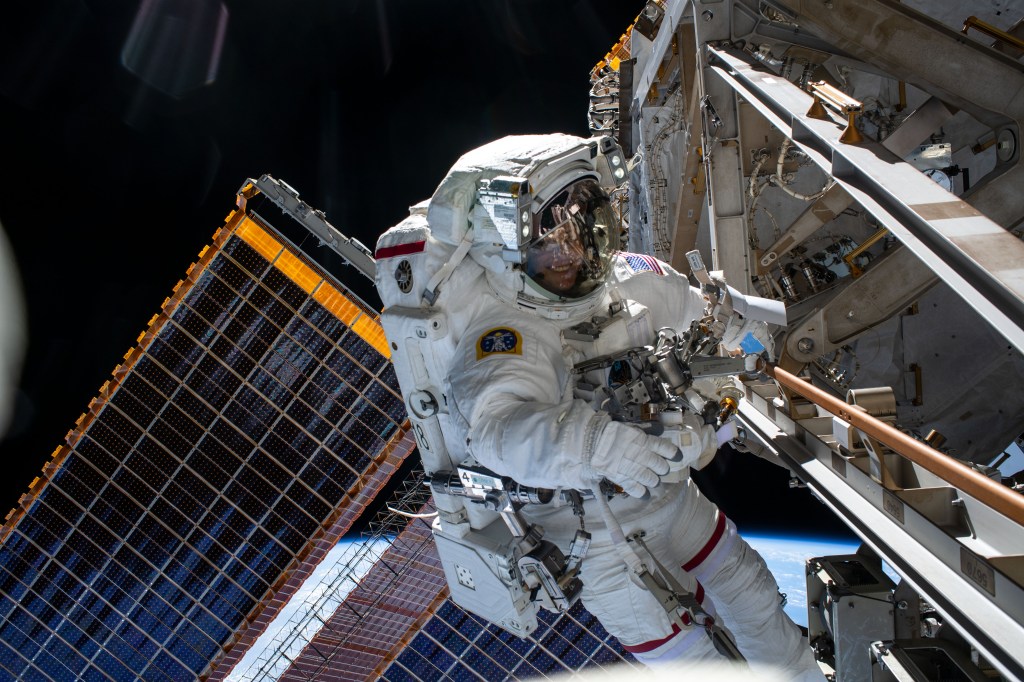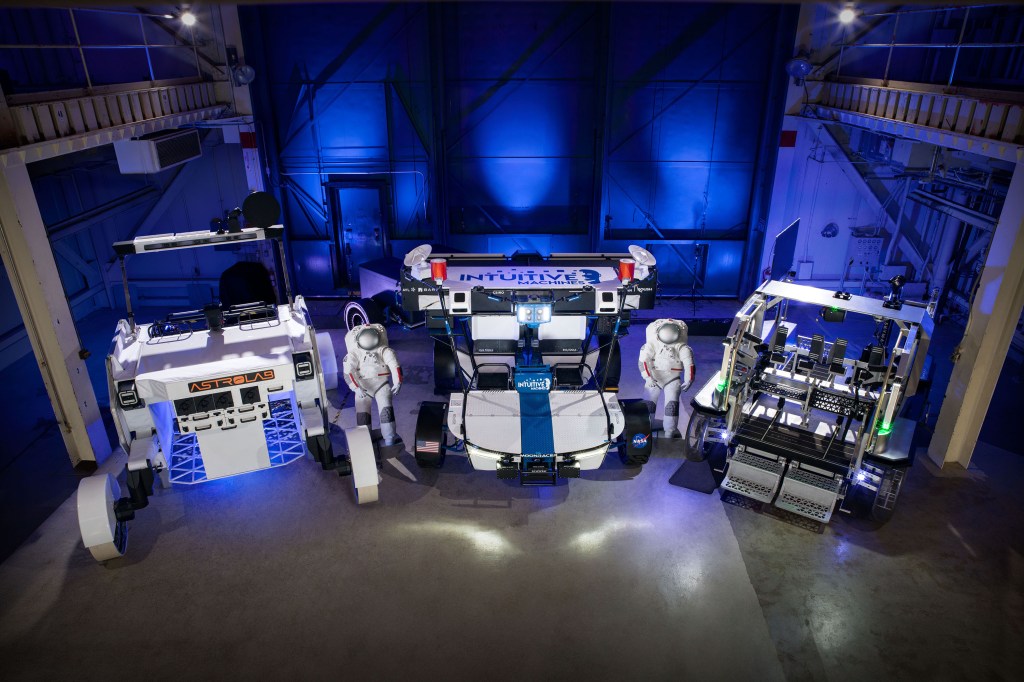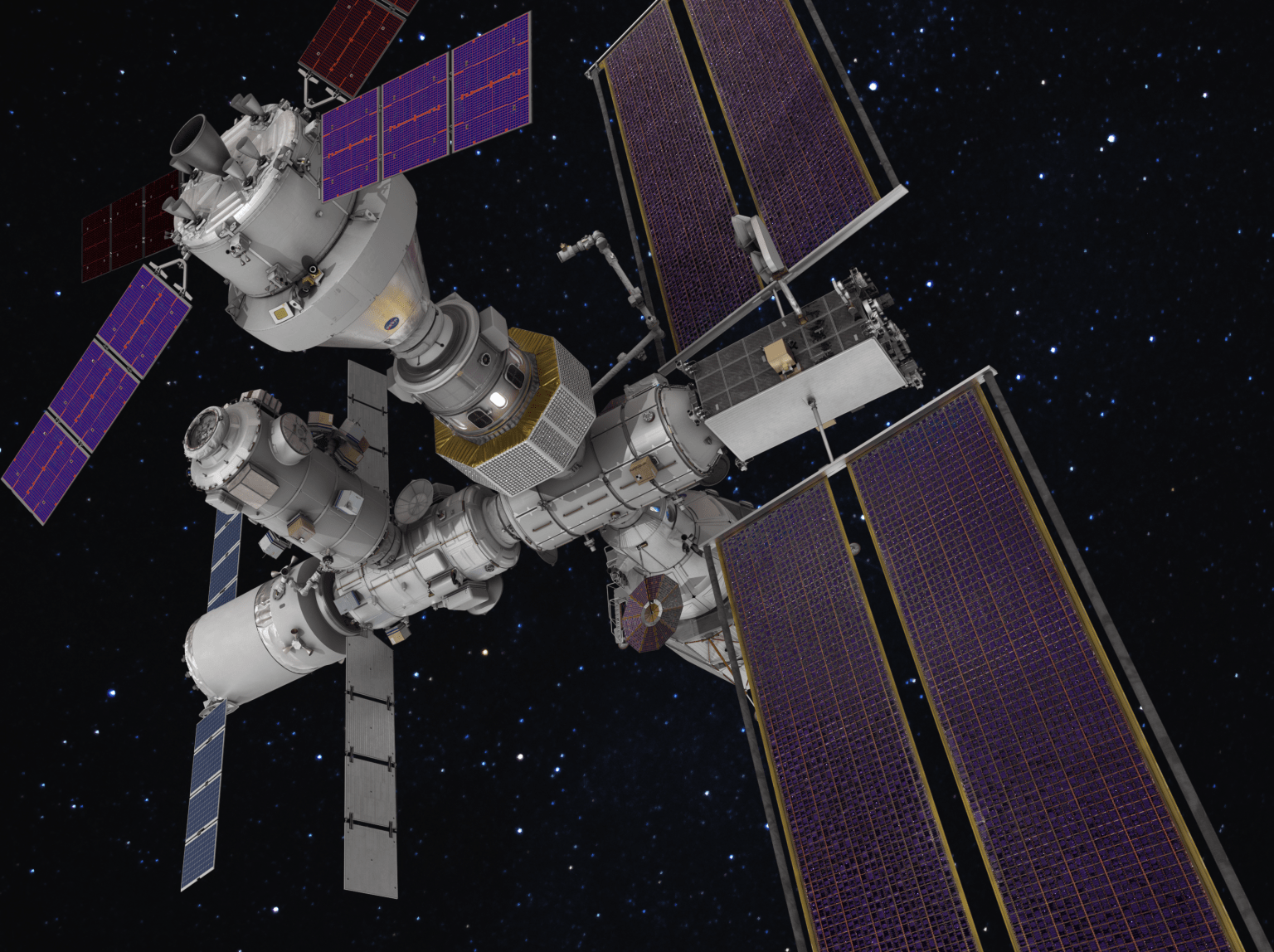


Extravehicular Activity & Human Surface Mobility
NASA’s Extravehicular Activity and Human Surface Mobility Program provides safe, reliable, and effective spacewalking and surface mobility capabilities that allow astronauts to survive and work outside the confines of a spacecraft in order to explore on and around the Moon. Located within the Advanced Exploration Systems Division at NASA Headquarters and supporting both the Space Operations Mission Directorate and the Exploration Systems Development Mission Directorate, the Extravehicular Activity and Human Surface Mobility Program is comprised of several key elements, including spacewalking capabilities in both low Earth orbit and on the Moon, the Lunar Terrain Vehicle, technology development and partnerships, and pressurized crewed rover systems.
Location
Johnson Space Center
Houston, TX
Founded
2022
EHP Leadership
Overview
Providing spacesuit capabilities and surface mobility systems for humanity’s return to the Moon.
NASA’s Extravehicular Activity and Human Surface Mobility Program represents a key cornerstone of NASA’s Artemis program to return humans to the Moon and explore deep space, as well as continuing a critical role supporting the International Space Station and the commercialization of low Earth orbit. It serves as the agency’s program to develop next-generation spacesuits, human-rated rovers (pressurized and unpressurized), and tools, along with all the necessary spacewalking support systems for use in microgravity, on the lunar surface and, eventually, on other planets. The Extravehicular Activity and Human Surface Mobility Program leverages commercial and international partnerships to obtain services related to extravehicular and surface mobility activities. Using commercial partnerships enables NASA to benefit from industry innovations and efficiencies and allows the vendors to offer these services to the private sector, outside of NASA programs. In this way, the program is facilitating the advancement of U.S. industry that actively benefits the economy and American taxpayer.

Spacewalks
Spacewalking is the pinnacle of human exploration.
Spacewalking symbolizes the human element of exploration in space more than any other activity. Any time an astronaut ventures outside the International Space Station, or leaves the confine of a spacecraft, it is called a spacewalk or EVA (extravehicular activity). The first person to go on a spacewalk was Russian cosmonaut Alexei Leonov on March 18, 1965, followed by NASA astronaut Ed White on June 3, 1965, during the Gemini 4 mission. Astronauts conduct spacewalks to perform maintenance on the space station, install new equipment, or deploy science experiments. With the assembly of the space station taking place over two decades ago, spacewalks play an instrumental role in maintaining working operations on the orbiting laboratory.

Spacesuits
Protecting astronauts from the harshness of space.
Spacewalking is the pinnacle of human exploration and symbolizes the human element of exploration in space more than any other activity. A fully equipped spacesuit is actually a miniature spacecraft that provides astronauts from the extreme environment of space. The spacesuit worn for spacewalks outside the International Space Station is called the Extravehicular Mobility Unit, or EMU. NASA calls a spacewalk an Extravehicular Activity, or EVA, so this type of suit is often called an EVA suit.

Spacewalking Tools
Specially adapted tools allow astronauts to perform critical tasks in space.
Spacewalking tools play an essential role in an astronaut’s ability to perform maintenance on the International Space Station during a spacewalk or help them collect lunar samples while they are exploring the surface of the Moon.

Lunar Terrain Vehicle
Allowing astronauts to explore farther on the Moon than ever before.
As astronauts explore the South Pole region of the Moon during Artemis missions, they will be able to go farther and conduct more science than ever before thanks to a next-generation Lunar Terrain Vehicle (LTV). The LTV is an unpressurized rover that Artemis astronauts will use to traverse the lunar surface and transport crew and equipment across wide areas as they conduct science experiments and collect lunar samples.

Pressurized Rover
Expanding our ability to explore while living and working on the lunar surface.
The pressurized rover will greatly expand our ability to explore, live and work on the lunar surface. Having a pressurized volume to live in, astronauts can live and work in the vehicle to conduct exploration and scientific activities without the hinderance of a spacesuit. Outfitted with robotics, cameras, sensors, and scientific instruments, the pressurized rover will be a mobile laboratory for exploration activities across large areas of the lunar surface.

New Commercial Artemis Moon Rovers Undergo Testing at NASA
Recently, the agency completed the first round of testing on three commercially owned and developed LTVs (Lunar Terrain Vehicle) from Intuitive Machines, Lunar Outpost, and Venturi Astrolab at NASA’s Johnson Space Center in Houston.
Learn More
Latest Extravehicular Activity and Human Surface Mobility Program News

A JPL facility built to support potential robotic spacecraft missions to frozen ocean worlds helps engineers develop safety tests for…

NASA has selected Jim Geffre as deputy manager for the Extravehicular Activity and Human Surface Mobility Program. Geffre, a veteran…

You would not expect to see NASA at a car show—but that’s exactly where Johnson Space Center employees were from…
Training for the Moon and Beyond
To prepare for Artemis missions, watch as two integrated teams work together to practice end-to-end lunar operations with astronauts, NASA engineers, and field experts in the Arizona desert conducting the simulated moonwalks, and a team of flight controllers and scientists at NASA Johnson monitoring and guiding their activities.
Watch NowVideos

What's Behind This Door? – Prototype Immersive Technologies (PIT) Lab
This episode takes place in Building 16 at NASA Johnson in the Prototype Immersive Technologies (PIT) Lab. It features simulation software engineer Billy Young who demonstrates how virtual reality provides an immersive experience to train NASA astronauts for Artemis missions where they will experience challenging lighting conditions caused by permanently shadowed regions.

What's Behind This Door? – Neutral Buoyancy Laboratory
This episode features the Neutral Buoyancy Lab (NBL), which showcases how the facility is used for space station spacewalks and training, the important role of the dive teams, and how the facility will be used to prepare for the Artemis campaign.

NASA Prepares to Explore Moon: Spacesuits, Tools
Preparing to explore the surface of the Moon goes well beyond designing and building safe spacecraft and spacesuits. NASA also has to ensure the surface vehicles and suits have the mobility required to do science, and that astronauts have the tools they need to identify and scoop up rock and soil samples.
Additional Resources

EHP Technical Library
NASA will make available all technical data related the design and development of technology to which the government has the rights or license to disclose. NASA is sharing its technical documentation in this technical library to facilitate industry access to design and requirements data.
Program Contacts
Tim Hall | Johnson Space Center
Strategic Communications Manager
timothy.a.hall@nasa.gov
Victoria Ugalde | Johnson Space Center
Communications Strategist
victoria.d.ugalde@nasa.gov
















































